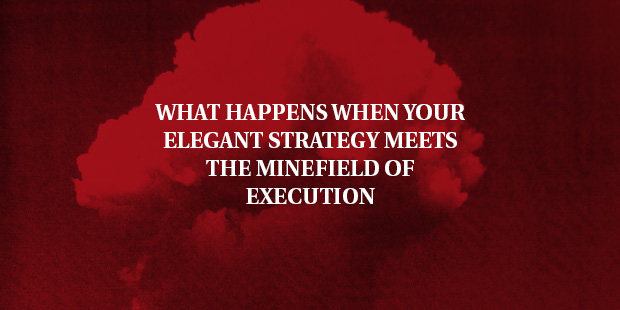
What Happens When Your Elegant Strategy Meets the Minefield of Execution
Setting strategy is elegant. It’s a clean and sophisticated process of collecting and analyzing data, generating insights, and identifying smart paths forward. Done at arm’s length in an academic fashion, tight logic is the only glue needed to hold ideas together. The output is a smooth narrative in a professional-looking document made up of Venn diagrams, 2×2 matrices, and high-level plans of attack. Jettison this business. Focus efforts here. Build up this organizational capability. Executives buy into the plan. The strategists, confident in their intellectual prowess, quietly recede into the background.
Then the trouble starts. Execution is a minefield. The clean and elegant logic of strategy gets dirty in the real world. Agendas compete. Priorities clash. Decisions stall. Communication breaks down. Timelines get blown. It’s never a question of if these problems will happen; it’s a question of when and to what degree. Managing these challenges takes street smarts and muscle. Overwhelming success means you take a few punches, but still make the plan happen. The process is always a little ugly. The executors’ dirt-in-the-fingernails view on the ground is much different from the strategists’ high-minded view from the air.
The best strategists, executors, and leaders stand up and say, “I’m responsible for it” even if it isn’t in their job description. It’s doubly powerful when both strategists and executors do this, meeting in the middle.
To understand the complimentary viewpoints of both strategists and executors, read the rest of the article by leadership and strategy consultant Doug Sundheim in hbr.org here.

Tags: Strategy












